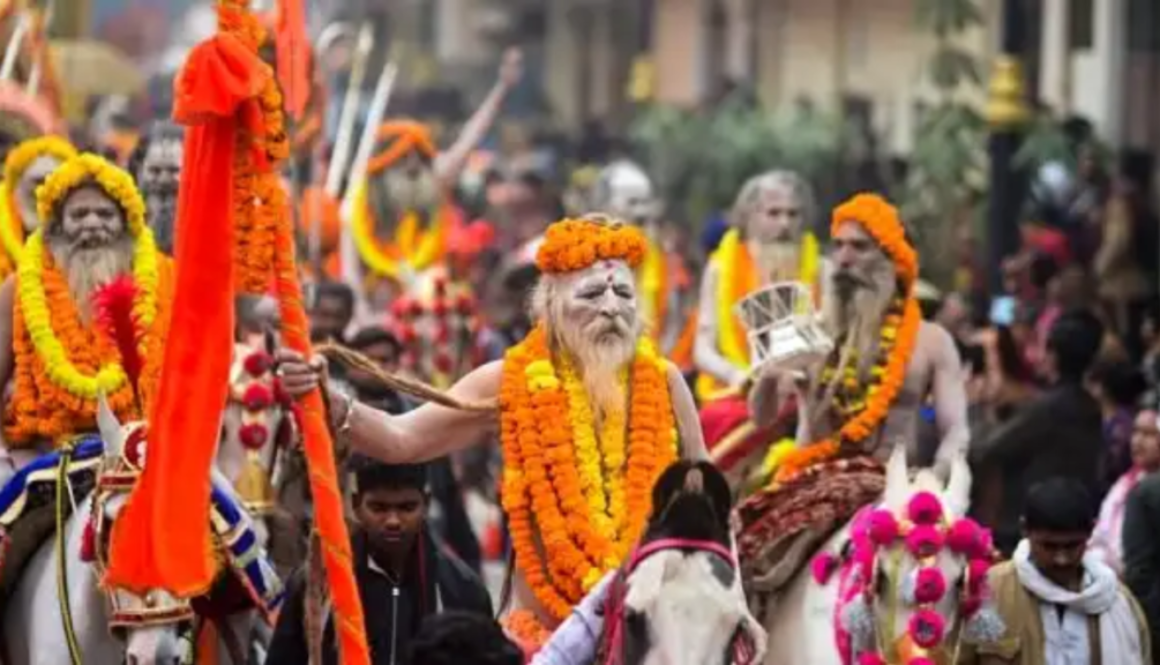Maha Kumbh Mela 2025 in Prayagraj: A Spiritual Odyssey of Renewal and Unity

Imagine a riverbank where the air thrums with devotional chants, and the horizon blurs into a mosaic of colorful tents, saffron-clad sadhus, and millions of pilgrims. Welcome to the Maha Kumbh Mela 2025 in Prayagraj, a celestial event where faith transcends boundaries, and the sacred waters of the Sangam—the confluence of the Ganges, Yamuna, and mythical Saraswati—promise liberation. Held once every 12 years, this ancient pilgrimage is not just a festival but a cosmic rendezvous of humanity, spirituality, and tradition.
The Spiritual Heartbeat: Why Prayagraj?
Prayagraj, formerly Allahabad, is revered as Tirtharaj (King of Pilgrimages). Here, the Sangam’s holy waters are believed to carry the nectar (amrita) of immortality, spilled during the legendary Samudra Manthan (churning of the ocean). Bathing here during the Kumbh is said to cleanse sins and break the cycle of rebirth. The 2025 Maha Kumbh, timed astrologically when Jupiter enters Taurus and the Sun aligns with Capricorn, amplifies this sanctity, drawing an estimated 150 million devotees.
A Journey Through Time: Origins of the Kumbh
The Kumbh’s roots stretch back millennia, documented by 7th-century Chinese traveler Xuanzang. Its current form crystallized in the 19th century under British governance, evolving into the world’s largest peaceful congregation. The Maha Kumbh’s legacy intertwines myth and history, symbolizing humanity’s eternal quest for divine connection.
2025: A Blend of Tradition and Innovation
The 2025 Mela isn’t just a repetition of tradition; it’s a leap into the future. Authorities are deploying AI-driven crowd management, eco-friendly waste systems, and mobile apps for real-time updates. Solar-powered camps and biodegradable materials underscore a commitment to sustainability. Post-pandemic, health safeguards like sanitization hubs and telemedicine tents ensure a safer pilgrimage.
Immersive Experiences: Rituals and Revelations
-
Shahi Snan (Royal Bath): Ascetics from akharas (monastic orders) lead processions, their naked Naga Babas smeared in ash, charging into the Sangam at dawn. These baths on auspicious dates (to be announced) are the festival’s pinnacle.
-
Ganga Aarti: As dusk falls, lamps flicker on the ghats, priests chant hymns, and the river mirrors a thousand flames—a soul-stirring spectacle.
-
Cultural Tapestry: From yoga sessions to folk dances, the Mela is a living museum of India’s heritage. Wander through bustling bazaars selling rudraksha beads, aromatic chai, and brass idols.
Pilgrim’s Guide: Navigating the Kumbh
-
Timing: Plan around key bathing dates (typically January–February). Avoid peak days if crowds overwhelm.
-
Stay Connected: Book accommodations months in advance; government-run camps offer budget options.
-
Respect Customs: Dress modestly, remove footwear near rituals, and seek permission before photographing sadhus.
-
Stay Safe: Hydrate frequently, secure valuables, and follow marked pathways.
Conclusion: A Tapestry of Faith and Humanity
The Maha Kumbh Mela 2025 is more than a pilgrimage—it’s a microcosm of life itself, where despair meets hope, and the mundane touches the divine. As the Sangam’s waters embrace devotees from every corner of the globe, the Kumbh whispers an age-old truth: in unity, there is liberation. Whether you seek spiritual awakening or cultural wonder, Prayagraj 2025 promises an odyssey that lingers long after the tents fade.
